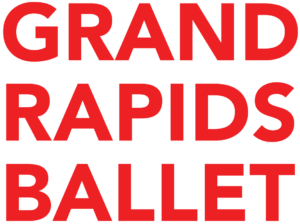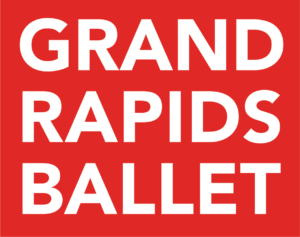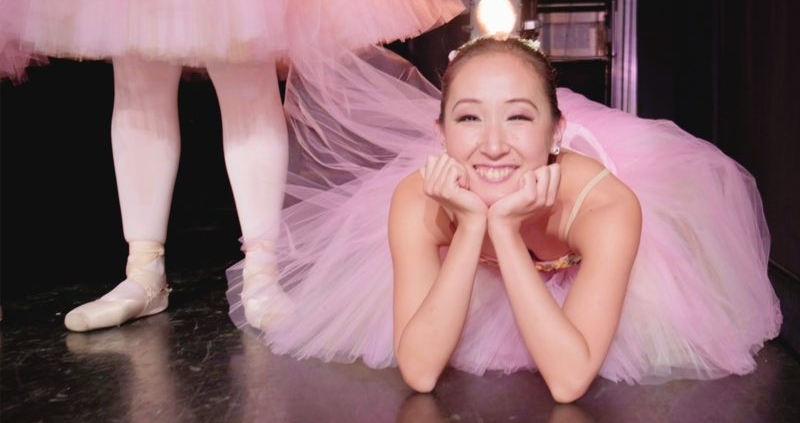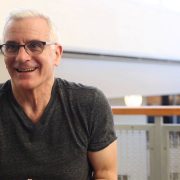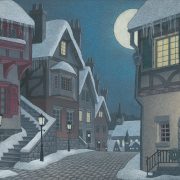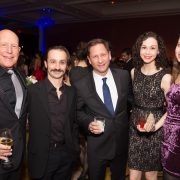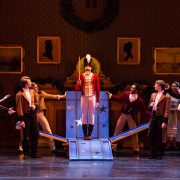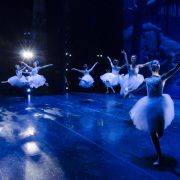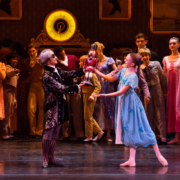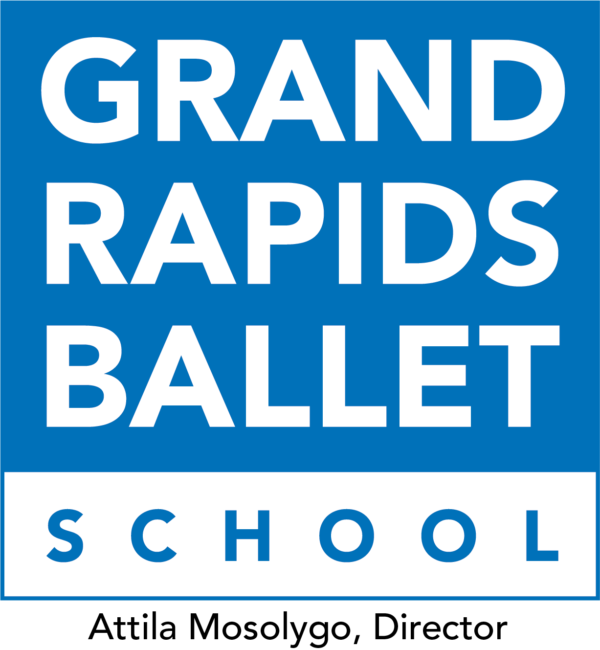While a global pandemic may have changed the way we celebrate the holidays this year, some traditions remain sacrosanct, even essential, to the Christmas season.
So when the Grand Rapids Ballet was determined to produce a virtual staging of The Nutcracker, they turned to local creative production studio, SALT, to help them create a uniquely intimate experience that would delight viewers from ballet aficionados to newcomers.
In this special installment of Made in Frame, we’ll peek behind the curtain to see how SALT used Blackmagic cameras, the beta version of Resolve 17, Adobe Premiere Pro, and Frame.io to deliver some much-needed holiday magic to the ballet company—and to a community challenged by the events of 2020.
A shared creative vision
SALT, the production company founded by director Sloan Inns and his wife, producer Jenna Inns, are neither strangers to dance films nor to rallying around their community.
In 2017, they created a new style of dance movie with Dust. Their lead dancer performed tirelessly throughout the 18-hour shoot, and in the following year of post-production, Sloan carefully retimed the performance to a new musical score. The result? A mind-bending viewing experience as the dancer appears to dance in both real time and slow-motion while staying on beat.
The artistic vision for the film was intended to inspire those struggling through life. That’s why it’s no surprise that when the pandemic hit Grand Rapids hard, SALT, along with Cre8gency, jumped in to document the community’s heroic response in a film they called GR Strong. Brewers went from making beer to hand sanitizer. West Michigan companies like Whirlpool manufactured ventilators instead of kitchen appliances. Restaurant owners fed the many people who were out of work while church volunteers delivered food to the elderly. And Sloan and Jenna armed themselves with masks and hand sanitizer to capture the historic effort.
The Grand Rapids Ballet website succinctly states a similar mission: Michigan’s only professional ballet company is committed to lifting the human spirit through the art of dance. That’s why it’s also no surprise that GR Strong contains clips of the dancers demonstrating their appreciation for the many frontline workers by creating uplifting performances delivered via Zoom.
The Ballet had already committed to keeping the season going in some form, and Jenna and Sloan had previously worked with them on one performance. “Then, in May or June, they contacted us to discuss how we could do The Nutcracker,” Sloan says. “We had to figure out not just how to create a show that would be fresh and new for at-home viewers, but also how to stay true to the essence of the ballet without being able to have all the dancers together on stage.”
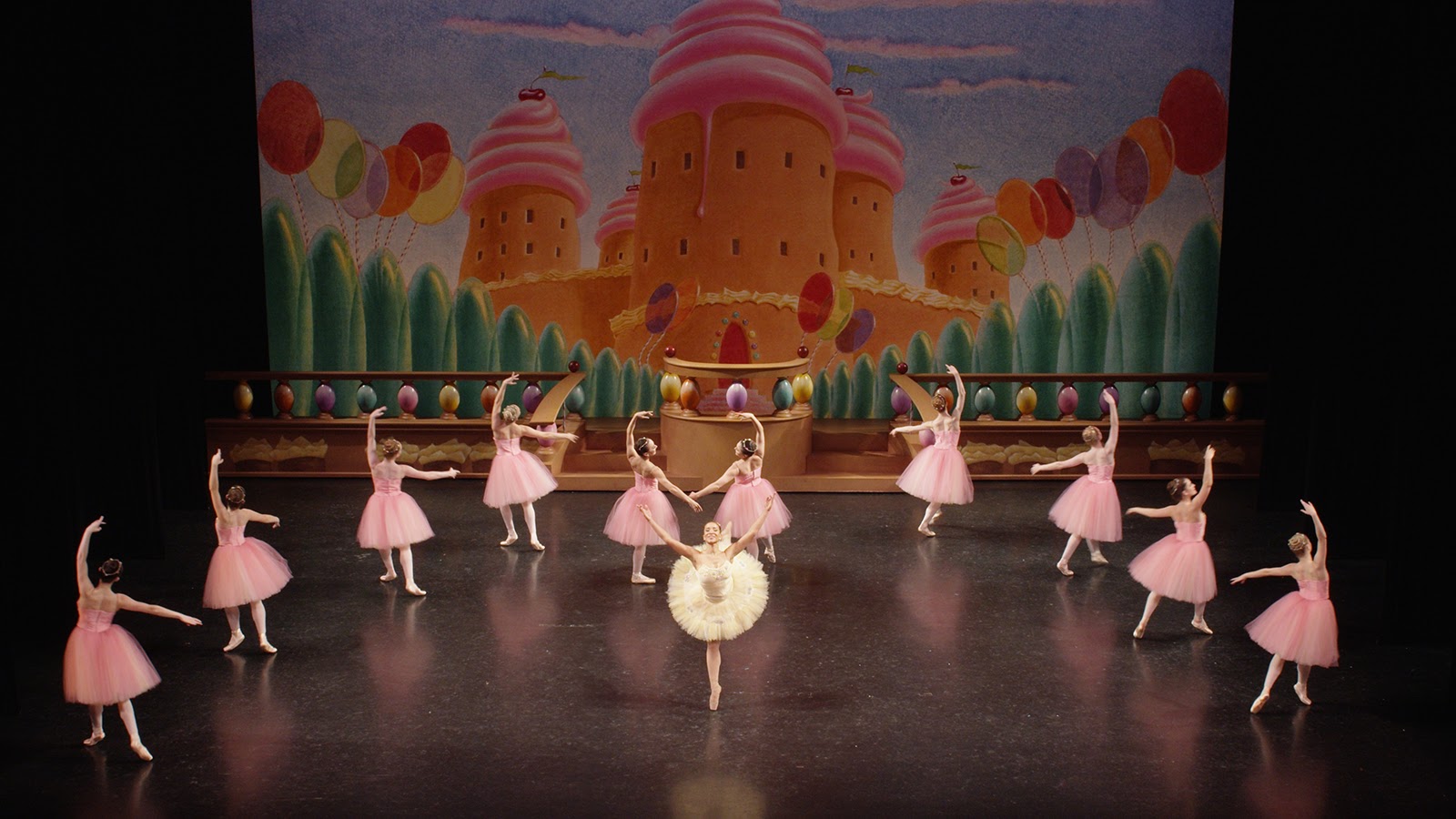
Sloan and Jenna, both dance lovers, were familiar with the way shows like So You Think You Can Dance and The World of Dance take the approach of showing not just the performances but also going behind the scenes to document the dancers’ lives, their practices, their challenges. “You get to know the dancers as people,” Jenna says, “and you form a connection with them that goes beyond dance.” “It makes you feel like you’re rooting for them,” Sloan adds.
Partnering with Artistic Director James Sofranko, the like-minded creatives settled on a similar performance/documentary approach for this production, going backstage with everyone from the dancers to the choreographers and stagehands and wardrobe people. But the biggest challenge was creating the illusion that all the dancers were on stage together, performing a large-scale ballet while remaining safely distanced.
Intricate choreography
As a director-editor who actively seeks out new creative challenges, Sloan worked with Sofranko to devise an ingenious approach. There was no real way to prepare for this extraordinary production, but the Ballet had a recording of a 2019 rehearsal that they shared with SALT to help them work through the methodology.

The stage was divided into distinct zones, and the dancers were grouped into “pods” of four or five dancers each, with each pod bubbled separately throughout the rehearsal period and the shoot. Each pod performed their portion of the dance in their delineated zone, never interacting with others. After all the pods performed their parts, they would be composited together to create the illusion that they were all dancing together on stage.
Using Blackmagic Design 4K cameras, Sloan and Jenna captured five different views and angles. One camera was mounted directly over the stage to capture the bird’s eye view; one was locked down in the auditorium to capture the wide master shot; one captured a medium shot; one was attached to a slider; and one was set up for the close angles.
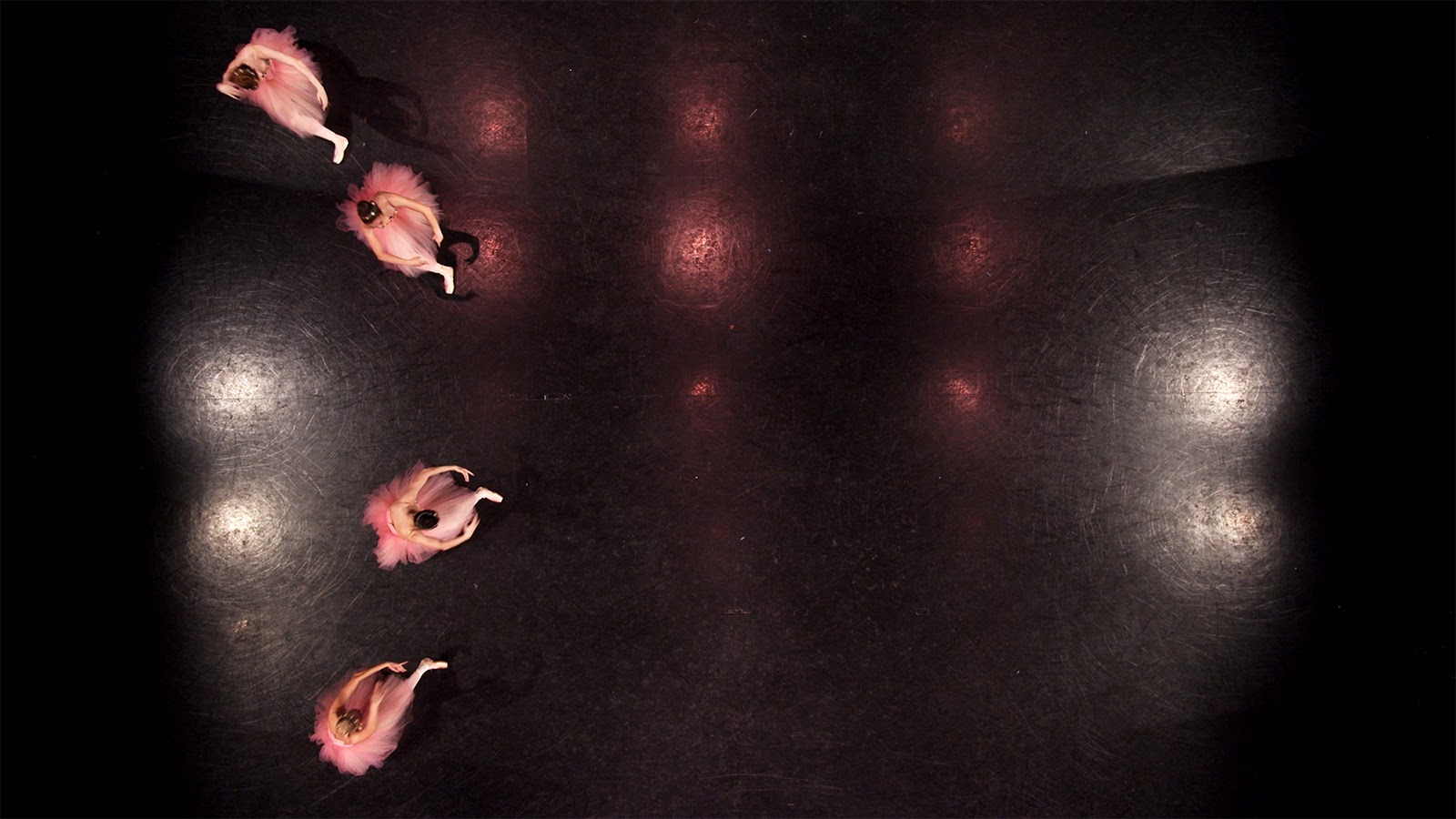
“We had five cameras rolling over the course of seven days,” Sloan says. “It took a long time, because when each pod was done we had to take a 15-minute break to ventilate the air before the next pod could come in. The Nutcracker is all about having a lot of people on stage for the big numbers, and we were only able to do small groups at a time.”
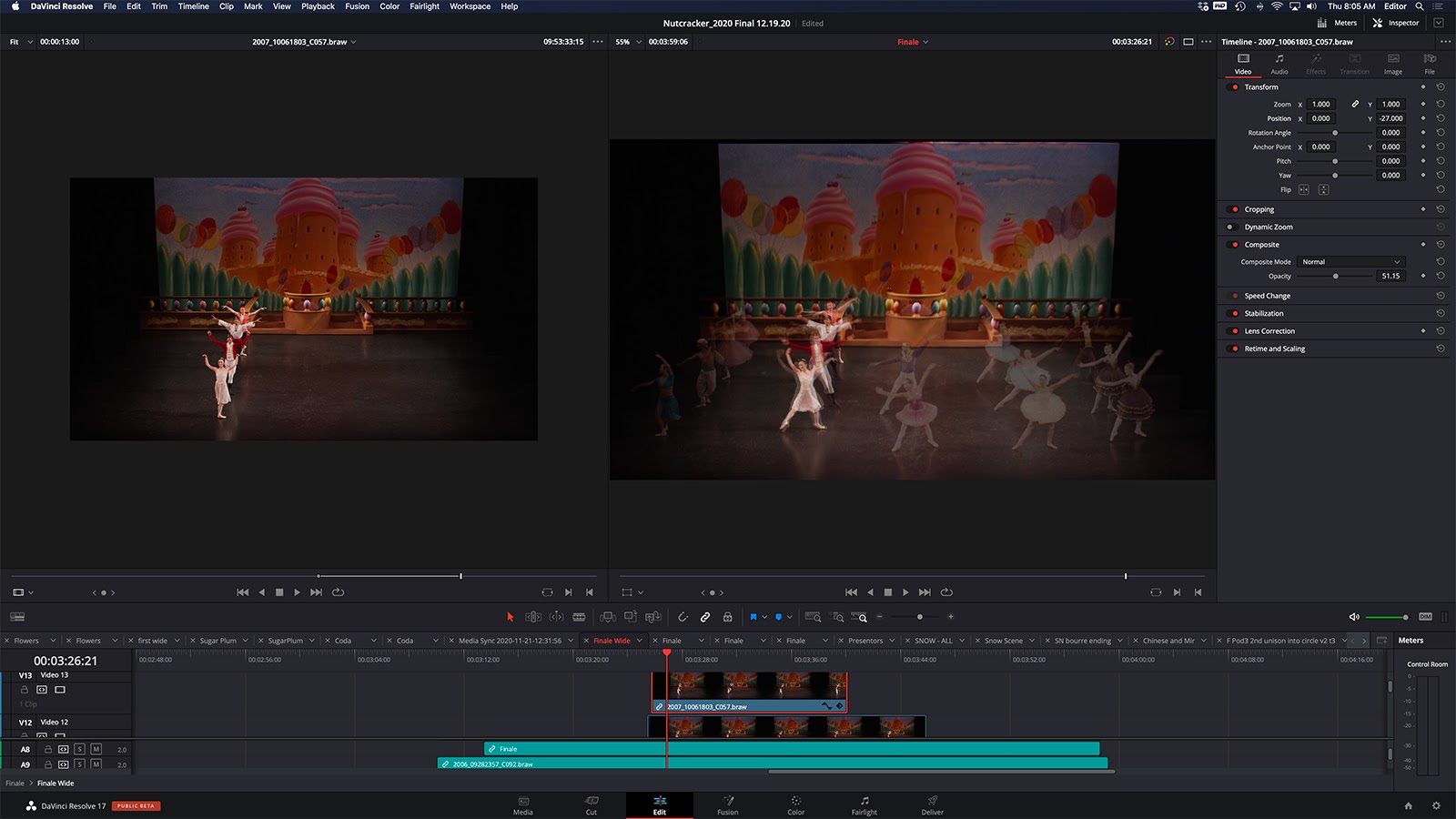
Because of the need to keep the pods separate, there are whole dance numbers that had to be broken up across several days of shooting, meaning that post-production would require meticulous choreography, as well. And then there was the behind-the-scenes component, directed by Jenna, which they shot with a Blackmagic Pocket 4K and a GoPro 7. “There are moments when the dancers are coming off the stage, breathing heavily, and we wanted to be able to capture that immediacy and get a snippet of how they’re feeling,” Sloan says. Jenna also felt it was important to capture the love and respect the dancers share with one another, and how it imbues their artistry with magic. “Those bits really added some gold in the edit,” Sloan says.

You can’t have a ballet without music, so the team also needed to film the Grand Rapids Symphony. “The only way we could do it safely was without the dancers so that the orchestra could spread out onto the stage [rather than in the close quarters of the pit] and we filmed them for two days and captured two takes of the entire score. In the final program, we cut back and forth between the dancers and the orchestra, so that they’re a part of the performance, as well.”
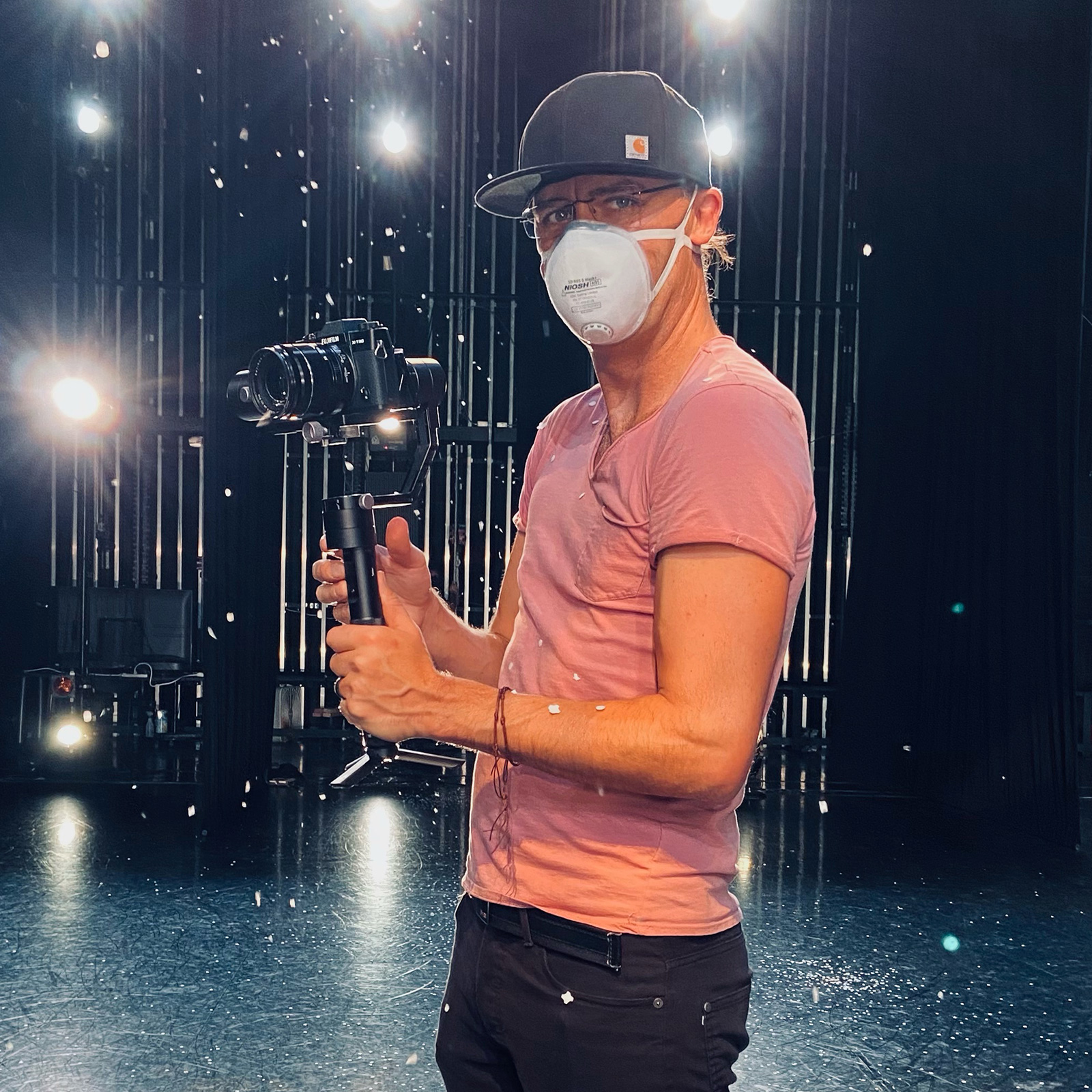
An athletic process
The first challenge was to organize the nearly 9 TB of footage. Sloan had editor Chad Kramer working remotely on Adobe Premiere Pro to focus on the BTS footage, while he concentrated on building the performance. Because they’d shot in 4K RAW 5:1 (to give themselves the ability to reframe or zoom in) and the files were so massive, Sloan decided to work with the beta version of Resolve 17 for its new support of proxy workflows during the offline, and then graded and mastered HD deliverables for the 60-minute show.
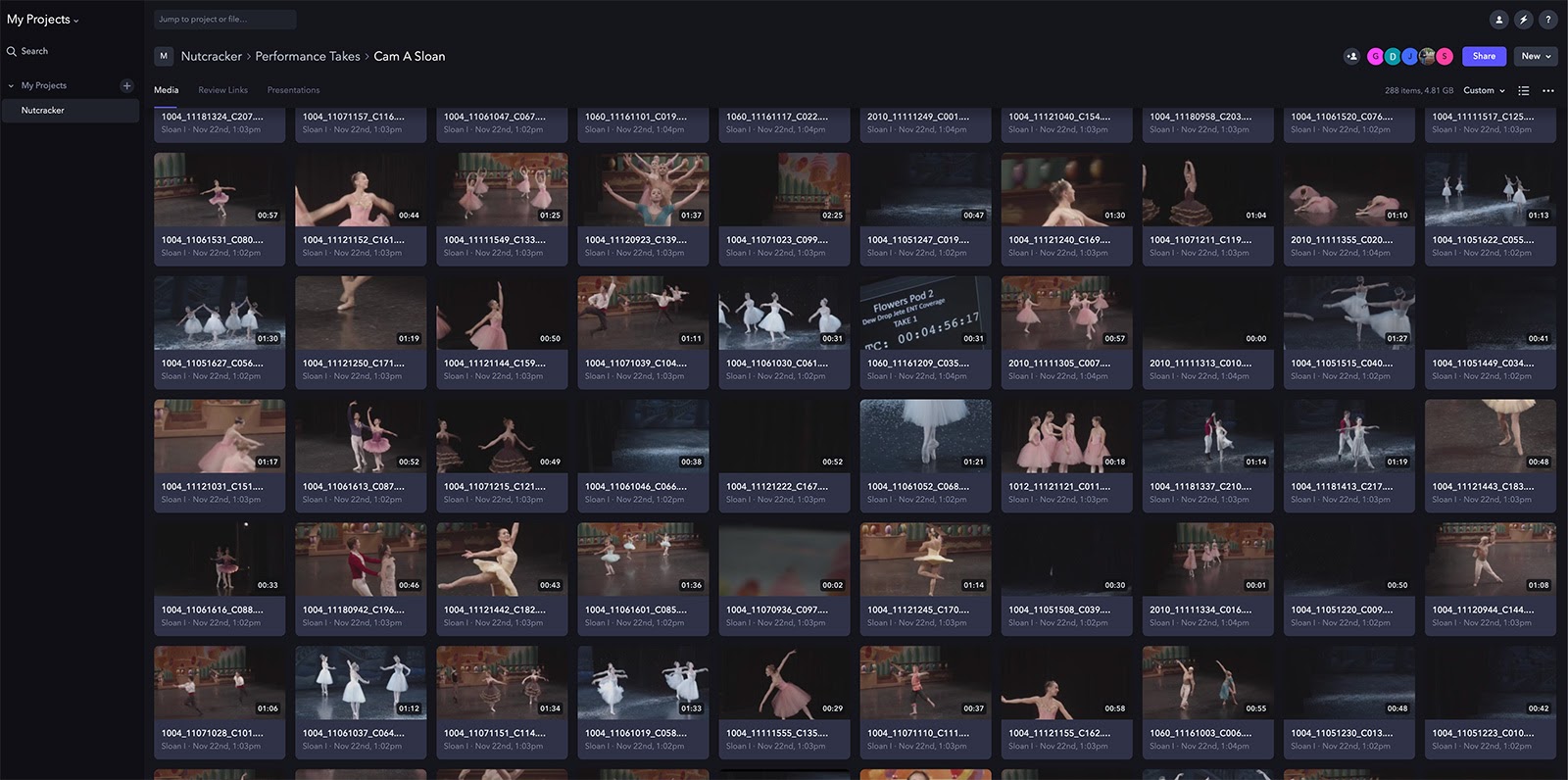
As Sloan assembled the performance segments, he’d upload them to Frame.io for Chad so that he could then build the narrative around the performance. “It’s not just a continuous block of dancing. For example, we have one section where the men are warming up for the Russian dance,” Sloan says. “They’re pushing their bodies and jumping and lying on the floor and we really get a sense of the amount of effort and training it takes—because when you just see them performing it, you can’t fully appreciate how incredibly athletic it is.”
“Essentially, we built the whole show in Frame.io”
Which, in a way, describes the painstaking process of editing this program. Sloan shared all the performance footage with Sofranko and the Ballet through Frame.io so they could pick the best bits. “Frame.io has been incredibly helpful with this,” he says. “I’m not able to be there with the Ballet, but I can share every single take with them. They’re able to leave very specific comments on the actual performance. Things like, ‘This doesn’t quite work because her arm isn’t in the proper position.’ Working on the snowflake dance, for example, we had 110 notes on just that sequence. They’re very particular about the way the dancers are edited, so it’s been a really good system for us.”
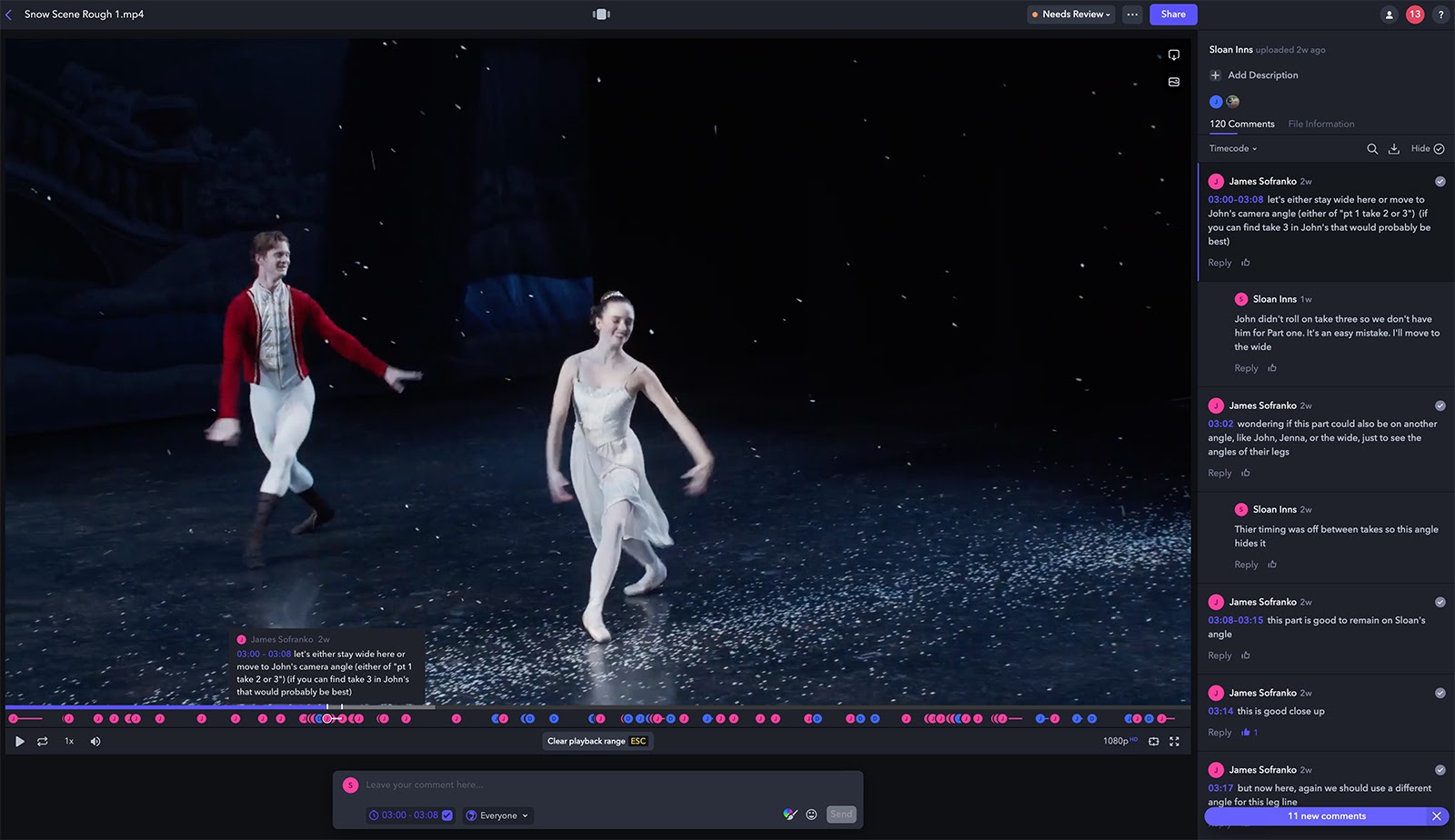
That sequence also required a lot of compositing, which Sloan was able to easily achieve in Resolve without having to do any frame-by-frame rotoscoping. “We used Power Windows and feathering to isolate and track, say, a foot that may have crossed over into another pod’s, and just by moving the window around it worked out really well.”
Sloan never actually sat in the room with Chad, and only had one in-person edit with Sofranko during the post-production process, so they relied heavily on the Resolve and Premiere integrations in Frame.io to exchange everything from assets to cuts. “Essentially, we built the whole show in Frame.io,” he says.
A storybook ending
It almost, but not quite, goes without saying that staging one of the most elaborate ballets in a company’s repertoire during COVID is a monumental undertaking. But what Sloan and Jenna also wanted to convey was just how high the stakes were for the Ballet as a company and for the dancers as individuals.
“There are bigger companies than the Grand Rapids Ballet who shut down the whole season,” he says. “A lot of people don’t know this, but The Nutcracker is the biggest single source of ticket sales for most ballet companies, so it’s essential to funding the rest of the season.”
Another reason why the Grand Rapids ballet wanted to be able to keep their dancers fit and working is that the career of a dancer is short, and losing out on a full season (or potentially more) could be devastating to them professionally. “These are elite athletes who had to find ways to stay in peak form during quarantine,” Sloan explains. “Without having the ability to go to the studio for classes or to gyms they had to stay in shape by having classes over Zoom, basically, in their living rooms.”
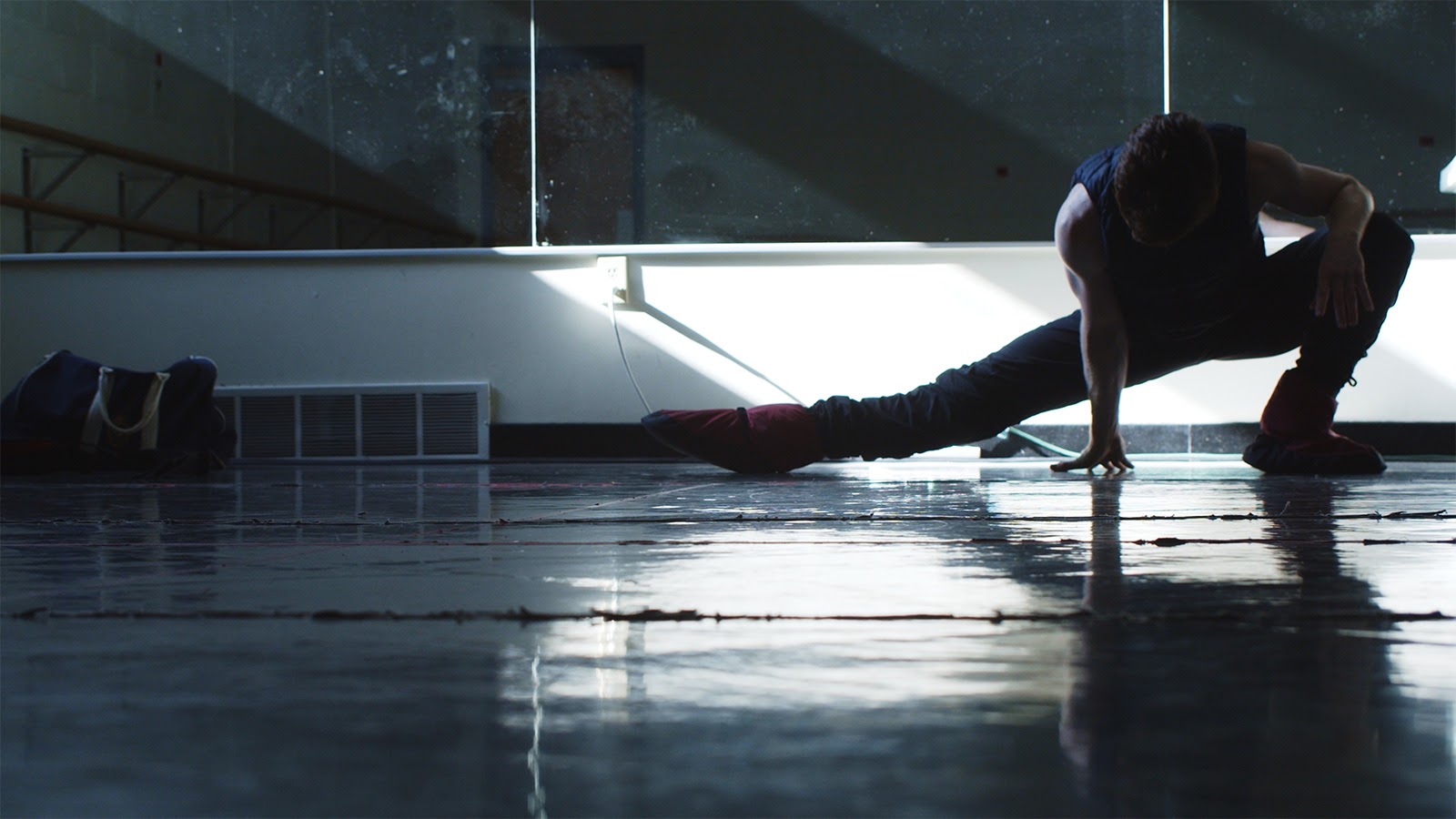
On a personal level, the lives of dancers can be somewhat isolating to begin with—the long hours of classes, rehearsals, and performances are far from the standard 9-5 job—so the company often functions as a kind of family or community, especially for dancers who come from other countries. “These dancers aren’t from Michigan,” Sloan says. “They’re from Cuba and Japan and the Dominican Republic and San Francisco. To be further isolated by being quarantined or bubbled makes it even harder for them.” And yet, the joy they experienced by being able to participate in this production came through in this piece. “There was one dancer who didn’t know if this would be her final season as a result of COVID, so she was so happy to have this opportunity to perform again,” Sloan says.

In the end, The Nutcracker video production serves as a metaphor for what every ballet company experiences on a daily basis. The dancers look so perfect, the productions so lush. Non-dancers who attend ballets have little idea of how hard the dancers train, the discipline and focus the profession demands, the sacrifices they make for their art.
Watching this Nutcracker, you would have no idea how carefully this was planned, how challenging the performance was to execute, how much material Sloan and the team had to cull down, how he was only once in the same room with his client after shooting concluded, and how seamlessly it all came together.
If there’s anything that 2020 has demonstrated, it’s that creatives will find ways to create—and that innovators will find ways to use technology to create new experiences and establish new traditions.
